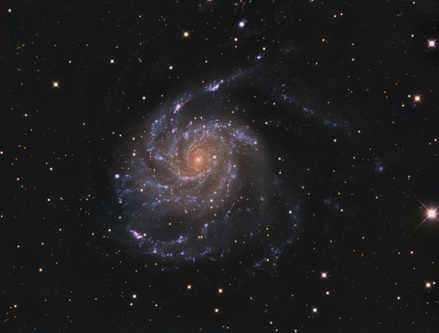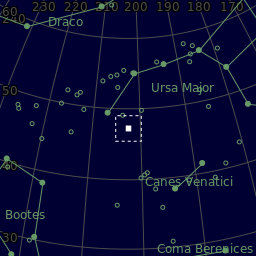M101 - The Pinwheel Galaxy
|
Details:
Mount: Mesu 200 Telescope: ODK10 Camera: QSI683 withBaader RGB filters and 3nm Ha Astrodon filter Luminance 54x1800s RGB 25x600s in each filter Ha 17x1800s This is 48 hours worth of data. Details:
M: HEQ5 T: Takahashi FSQ85 C: Atik 314L+ R: 32x 300s G : 32x300s B: 22x300s L: 13x 900s Ha: 7x1200s |
The Pinwheel Galaxy (also known as Messier 101, M101 or NGC 5457) is a face-on spiral galaxy distanced 21 million light-years away in the constellation Ursa Major, first discovered by Pierre Méchain on March 27, 1781.
M101 is a large galaxy comparable in size to the Milky Way. With a diameter of 170,000 light-years it is roughly equal the size of the Milky Way. It has a disk mass on the order of 100 billion solar masses, along with a small central bulge of about 3 billion solar masses. Here you can see two images taken with different equipment. These are taken as well about 2 years apart so I'd like to think that my processing techniques have improved over time to give a more pleasing image over all. |



